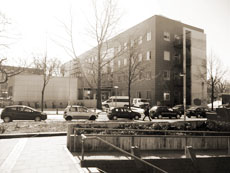


An example of Neo-Renaissance in North Germany is the building at Callinstrasse 3-9, which was built between 1906 and 1909, for institutes specialising in chemistry. Designed by Friedrich Ebel, the building was celebrated by the press of the time as the "Chemistry Castle". The importance of chemistry as a scientific field rapidly increased in the early 20th century. The new and spacious building housed the Institute of Inorganic Chemistry, the Institute of Organic Chemistry, the Institute of Electrochemistry and the Institute of Technical Chemistry.



The building consists of an elongated main area with two side wings in the direction of Welfengarten. An impressive lecture hall building was built to the west of the complex. Due to the rapid increase in institutes specialising in chemistry, the complex was expanded several times. The physical chemistry department was given its own building in 1930 and the organic chemistry department in 1968. Instead of the factory boiler house demolished in 1992, the extension to the chemistry building was built and officially opened in 1995. A reconstructed historic gateway commemorates this era.



Since 1995, the building was redeveloped in multiple construction phases. Between 2008 and 2010, the chemistry building was extensively renovated and restored, both inside and out, in consultation with the department for preservation of historical monuments. In particular, the lavishly decorated Kali Lecture Hall, a prime example of historicism, has been restored to what it must have looked like at the turn of the century.








